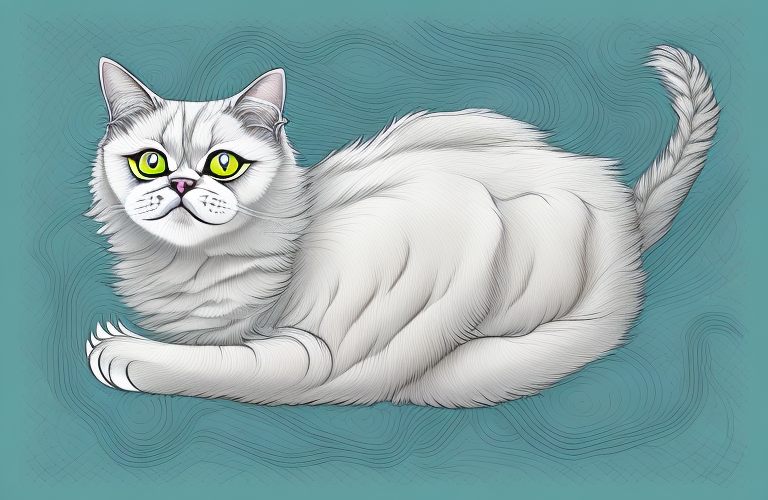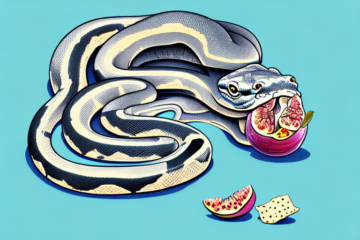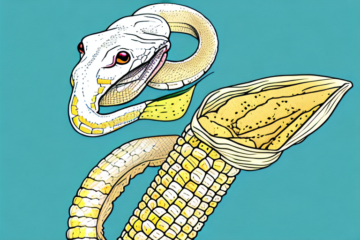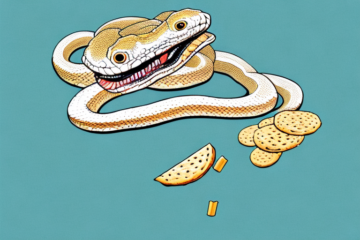If you’re looking for a cuddly and affectionate feline companion with a unique appearance, the Cymric cat might be the right choice for you. Cymrics are a breed of cat that stand out for their naturally bobbed tails and sweet personalities. In this article, we will explore the origin, physical characteristics, personality traits, health concerns, grooming and care needs, training and exercise requirements, differences from other similar breeds, tips for choosing the right Cymric cat, breeding and genetics, and famous Cymric cats in pop culture.
Origin and History of the Cymric Cat Breed
As a breed, Cymric cats are relatively young. Their history dates back only to the 1960s, when a genetic mutation occurred within the Manx cat population on the Isle of Man, a small island off the coast of England. The mutation was found in a small population of Manx cats with no tails or very short tails. These cats were mated together to preserve the mutation and eventually formed the foundation for the Cymric breed. Cymric cats were then recognized as a breed by the Cat Fanciers Association in 1994.
Despite their young age as a breed, Cymric cats have quickly gained popularity among cat lovers. They are known for their playful and affectionate personalities, as well as their unique physical characteristics. Cymric cats have a round, compact body and a thick, plush coat that comes in a variety of colors and patterns. They are also known for their lack of a tail or a very short tail, which is a result of the genetic mutation that created the breed. Cymric cats make great pets for families and individuals who are looking for a loving and loyal companion.
Physical Characteristics and Appearance of the Cymric Cat
The most defining characteristic of the Cymric cat is its bobbed tail. However, not all Cymrics have short tails – some have longer tails that resemble a pom-pom. Cymrics are also known for their muscular and round bodies, short legs, and large, expressive eyes. They have a thick, plush coat that comes in a range of colors and patterns, including calico, tortoiseshell, and tabby.
In addition to their physical characteristics, Cymric cats are known for their playful and affectionate personalities. They are often described as being intelligent and curious, and they enjoy playing with toys and interacting with their owners. Cymrics are also known for their love of food, and they can be prone to overeating if their diet is not carefully monitored.
Another interesting fact about Cymric cats is that they are a relatively new breed, having only been recognized by major cat associations in the 1990s. They are believed to have originated from a genetic mutation in the Manx cat breed, which also has a naturally short or absent tail. Cymrics are now recognized as a distinct breed, and they have gained popularity among cat lovers around the world.
Personality Traits and Temperament of the Cymric Cat
Cymric cats are known for being friendly, affectionate, and loyal to their families. They are playful, intelligent, and curious, and enjoy interacting with people. They make great lap cats and are great with children. Cymrics are also known for being quite vocal, and will often engage in long conversations with their owners. However, they can be cautious around strangers and take some time to warm up to new people.
In addition to their friendly and affectionate nature, Cymric cats are also known for their love of play. They enjoy chasing toys and playing games with their owners, and can often be found pouncing on objects around the house. Cymrics are also quite adaptable and can adjust well to different living situations, making them great pets for both apartments and larger homes. However, it’s important to note that Cymrics can be prone to obesity, so it’s important to monitor their diet and provide them with plenty of opportunities for exercise.
Health Concerns and Common Medical Issues in Cymric Cats
Cymrics, like all cat breeds, are prone to certain health conditions. One of the most common issues is spinal problems related to their taillessness. This can include spinal defects, which can cause mobility issues and even paralysis. Cymrics may also be prone to arthritis or hip dysplasia. It’s important to ensure that your Cymric sees a veterinarian regularly for checkups and vaccinations, and to keep a close eye on their mobility and overall health.
In addition to the above mentioned health concerns, Cymrics may also be prone to dental issues such as periodontal disease and tooth decay. It’s important to regularly brush your Cymric’s teeth and provide them with dental treats or toys to help maintain their oral health. Additionally, Cymrics may be sensitive to certain foods and may require a specialized diet to prevent digestive issues. Consult with your veterinarian to determine the best diet for your Cymric’s individual needs.
Grooming Requirements and Care Tips for Cymric Cats
Cymrics have a thick, plush coat that requires regular grooming. They should be brushed at least once a week to prevent matting and to remove loose hair. Cymrics are also prone to hairballs, so regular grooming can help prevent hair from accumulating in their stomachs. They should also have their nails trimmed regularly to prevent them from becoming too long and causing discomfort or injury. Cymrics are generally healthy cats that require minimal care, but it’s important to ensure that their grooming needs are met to keep them comfortable and healthy.
In addition to regular grooming, Cymric cats also benefit from interactive playtime and exercise. These cats are known for their playful and active personalities, and providing them with toys and opportunities to play can help keep them mentally and physically stimulated. Cymrics also enjoy climbing and perching, so providing them with a cat tree or other vertical space can be beneficial. It’s important to monitor their weight and ensure they are getting enough exercise to prevent obesity, which can lead to health problems.
Training and Exercise Needs for Cymric Cats
Cymrics are active cats that enjoy playing, climbing, and jumping. They require regular exercise to stay healthy and happy. You can keep your Cymric entertained with interactive toys such as feather wands and puzzle toys. Cymrics are also intelligent cats that can be trained to perform tricks and respond to commands. Positive reinforcement training is the best way to train your Cymric, as they respond well to praise and rewards.
In addition to physical exercise, mental stimulation is also important for Cymric cats. You can provide mental stimulation by offering puzzle feeders or hiding treats around the house for them to find. Cymrics also enjoy learning new things, so consider teaching them new tricks or providing them with new challenges to keep their minds active.
It’s important to note that Cymrics are social cats and enjoy spending time with their owners. They thrive on attention and affection, so make sure to spend quality time with your Cymric every day. This can include playing together, grooming them, or simply cuddling on the couch.
Differences between Cymric Cats and Other Similar Breeds
Cymric cats are often mistaken for their close cousin, the Manx cat. The main difference between the two breeds is their tail length – Cymrics have short or no tails, while Manx cats have stump tails. Cymrics are also typically larger and more muscular than Manx cats. Additionally, Cymrics have thicker coats and rounder faces than Manx cats.
Another breed that is often confused with Cymric cats is the American Bobtail. While both breeds have short tails, the Bobtail’s tail is usually longer than the Cymric’s. Bobtails also have a more triangular-shaped head and a more athletic build than Cymrics.
One unique feature of Cymric cats is their love for water. Unlike many other cat breeds, Cymrics enjoy playing in water and may even swim if given the opportunity. This trait is believed to have been inherited from their Manx ancestors, who were known for their love of water.
Choosing the Right Cymric Cat for Your Family
When choosing a Cymric cat, it’s important to find a reputable breeder who can provide you with a healthy, well-socialized kitten. Look for a breeder who does genetic testing on their breeding cats to ensure that their kittens are free from genetic abnormalities. It’s also a good idea to spend some time with the kitten before bringing them home to ensure that they have a compatible personality with your family. Cymrics are a great choice for families with children or other pets, as they are adaptable and friendly.
One thing to keep in mind when considering a Cymric cat is their grooming needs. Due to their long, thick fur, they require regular brushing to prevent matting and hairballs. If you don’t have the time or desire to groom your cat frequently, a Cymric may not be the best choice for you.
Another important factor to consider is the Cymric’s activity level. While they are generally adaptable and friendly, they are also known for their playful and energetic nature. If you’re looking for a more laid-back cat, a Cymric may not be the best fit for your family.
Breeding and Genetics of the Cymric Cat
The Cymric cat is a genetically unique breed. The gene that causes the short tail is a dominant gene, which means that just one copy of the gene from one parent will produce offspring with a short tail. However, breeding two Cymrics together can result in kittens with birth defects related to their taillessness. For this reason, responsible breeders carefully select their breeding cats to ensure that they are not at risk for these issues.
In addition to the taillessness gene, Cymric cats also have a unique coat pattern gene. This gene produces a distinct pattern of colored patches on the cat’s fur, known as the “piebald” pattern. This pattern is highly sought after by breeders and cat enthusiasts alike, and is a defining characteristic of the Cymric breed.
Another interesting aspect of Cymric cat genetics is their susceptibility to certain health issues. Due to their short, stocky build, Cymrics are prone to obesity and related health problems such as diabetes. Breeders must be aware of these risks and take steps to ensure that their cats are healthy and well-cared for.
Famous Cymric Cats in Pop Culture
Cymric cats have made appearances in popular films and TV shows. One of the most famous Cymric cats is Jonesy, the ship’s cat from the movie Alien. Jonesy survived several encounters with the film’s alien creature and became a fan favorite. Another famous Cymric is Dewey Readmore Books, a library cat who lived in a Spencer, Iowa public library and became a beloved local fixture.
So there you have it – a comprehensive guide to the Cymric cat breed! If you’re looking for a friendly, affectionate, and unique feline companion, the Cymric might be the perfect choice for you. With their bobbed tails, plush coats, and sweet personalities, Cymrics are sure to steal your heart.
In addition to their appearances in pop culture, Cymric cats have a rich history. The breed originated on the Isle of Man, where they were known as “Manx cats” before being recognized as a separate breed. Cymrics are known for their unique genetic mutation that causes their tails to be naturally bobbed or absent.
Furthermore, Cymric cats are highly adaptable and can thrive in a variety of living situations. They are equally happy in apartments or large homes, and are known for their ability to get along well with children and other pets. Cymrics are also intelligent and playful, making them a great choice for families looking for an active and engaging pet.










